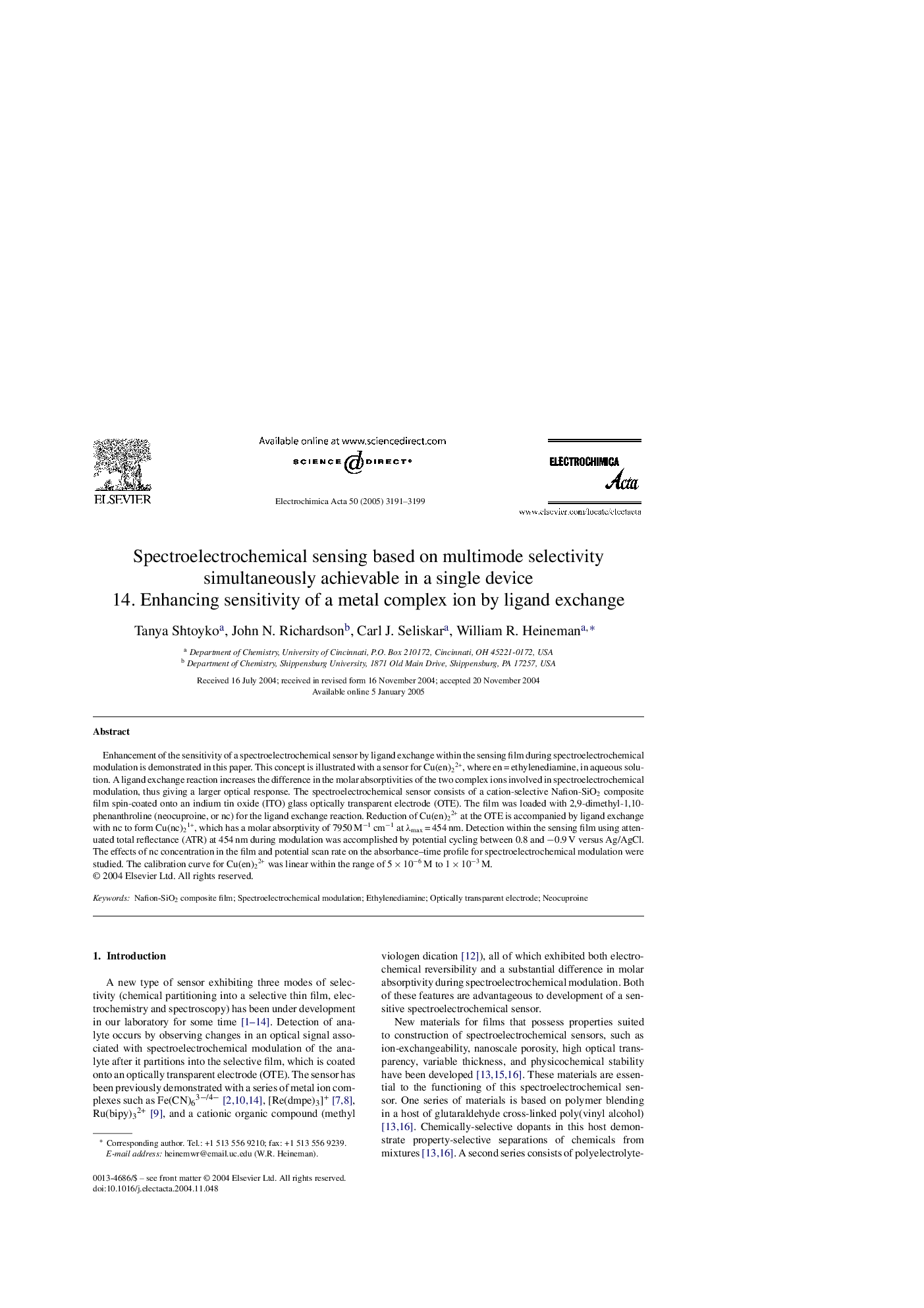| Article ID | Journal | Published Year | Pages | File Type |
|---|---|---|---|---|
| 196704 | Electrochimica Acta | 2005 | 9 Pages |
Enhancement of the sensitivity of a spectroelectrochemical sensor by ligand exchange within the sensing film during spectroelectrochemical modulation is demonstrated in this paper. This concept is illustrated with a sensor for Cu(en)22+, where en = ethylenediamine, in aqueous solution. A ligand exchange reaction increases the difference in the molar absorptivities of the two complex ions involved in spectroelectrochemical modulation, thus giving a larger optical response. The spectroelectrochemical sensor consists of a cation-selective Nafion-SiO2 composite film spin-coated onto an indium tin oxide (ITO) glass optically transparent electrode (OTE). The film was loaded with 2,9-dimethyl-1,10-phenanthroline (neocuproine, or nc) for the ligand exchange reaction. Reduction of Cu(en)22+ at the OTE is accompanied by ligand exchange with nc to form Cu(nc)21+, which has a molar absorptivity of 7950 M−1 cm−1 at λmax = 454 nm. Detection within the sensing film using attenuated total reflectance (ATR) at 454 nm during modulation was accomplished by potential cycling between 0.8 and −0.9 V versus Ag/AgCl. The effects of nc concentration in the film and potential scan rate on the absorbance–time profile for spectroelectrochemical modulation were studied. The calibration curve for Cu(en)22+ was linear within the range of 5 × 10−6 M to 1 × 10−3 M.
